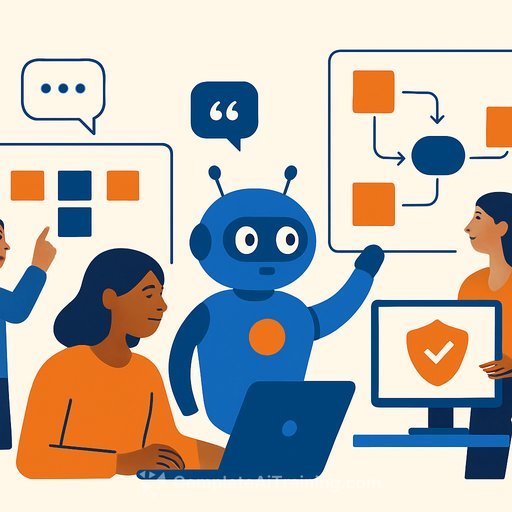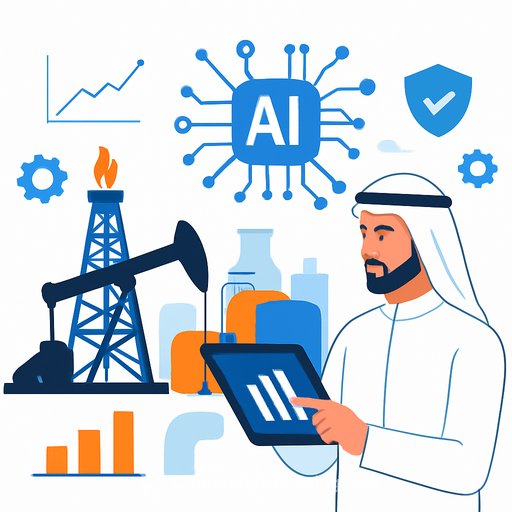AI@Work: 3 new patterns of work define AI-first companies
AI is now a core management decision, not a side project. Usage across the workforce has surged in the past two years, and the firms moving fastest are setting the pace for everyone else.
These leaders-call them Frontier Firms-treat AI as a compounding asset. They are rebuilding workflows around human-AI collaboration to drive speed, quality, and scale.
3 new patterns of work for the AI era
1) Human + AI assistant
The pattern: an individual pairs with an AI assistant to remove busywork and accelerate execution. Work starts with AI-drafts, outlines, code suggestions, tests-so people spend more time on design, decisions, and customer value.
- Where to apply now: sales emails and proposals, marketing drafts, support macros, finance reconciliations, research summaries.
- Manager checklist: define standard prompts, set data-access rules, pick 1-2 tools, and track time saved and throughput per person.
- Guardrails: ground assistants in your docs, log prompts/outputs, and require human sign-off for external communications or financial data.
2) Human-agent teams
The pattern: agents act as digital workers for specific steps-reviewing code, checking compliance, summarizing tickets-while people make final calls. This compresses cycle times and reduces friction across handoffs.
- Where to apply now: code review and testing, contract pre-checks, lead qualification, ticket triage, expense auditing.
- Manager checklist: assign an owner, define inputs/outputs, set approval thresholds, and measure first-pass yield and rework rate.
- Guardrails: keep agents within well-scoped workflows, restrict systems access, and require audit trails for every agent action.
3) Human-led, agent-operated
The pattern: redesign a workflow so agents run it end to end. Humans set goals and guardrails, step in on edge cases, and focus on what to build or improve next.
- Where to apply now: software release pipelines, monthly reporting, knowledge-base upkeep, marketing campaign ops.
- Manager checklist: express goals in plain language, codify policies, define escalation paths, and track lead time, error rate, and cost per transaction.
- Guardrails: approval checkpoints, sandboxed environments, policy-as-code, and continuous evaluation against known good outputs.
How this shows up in software development
Assistants draft code and tests so engineers focus on architecture and user value. Agents handle first-pass reviews, security checks, and compliance scans to keep sprints moving.
With guardrails in place, a release pipeline can run with minimal human touch: goals in plain language, agents generate prototypes, tests and deploys run automatically, and developers step in only when the system flags anomalies.
It's not a linear path-it's a jagged frontier
You'll see all three patterns at once, in different corners of the business. Marketing may lean on assistants, engineering may rely on agent-driven testing, and finance may automate reporting.
The move isn't "add AI to old routines." It's redesign the work. Start every task with AI, map the workflow, insert agents where they add leverage, and rebuild steps that are bottlenecks.
Manager playbook: from intent to impact
- Prioritize workflows with high volume, clear rules, measurable outcomes, and frequent handoffs.
- Redefine roles: AI product owner (use cases and ROI), agent operations engineer (guardrails and reliability), prompt librarian (templates and reuse).
- Set KPIs: cycle time, first-pass yield, cost per transaction, policy violations, employee NPS, customer satisfaction.
- Build guardrails: data access controls, human-in-the-loop approvals, audit logging, red-teaming, and continuous evaluation.
- Tech stack basics: orchestration for agents, retrieval over your content, versioning for prompts/policies, and test suites for evaluation.
- Change the cadence: short pilots, weekly demos, publish wins, retire what doesn't work, and scale what does.
30-60-90 day quick start
- Days 1-30: Pick two workflows. Baseline time, cost, and quality. Roll out assistants with standard prompts. Train teams and log outcomes.
- Days 31-60: Insert agents into one or two steps. Add approvals and audit trails. Ground agents in your knowledge base. Track first-pass yield and defect rates.
- Days 61-90: Redesign one workflow to be agent-operated end to end. Codify guardrails, escalation paths, and metrics. Set quarterly targets and scale to adjacent teams.
What leaders should communicate
- AI is here to remove drudgery and improve quality; people focus on judgment and creativity.
- We measure outcomes, not activity. Faster cycles with better quality is the bar.
- Guardrails protect customers, the brand, and the business. We move fast and stay accountable.
Further reading and resources
Upskill your teams
Equip managers and operators to apply these patterns in their own workflows. Start with practical, role-based learning and build toward certifications that prove capability.
Bottom line: Frontier Firms are human-led and agent-operated. Start every task with AI, insert agents into the work, and redesign the flow where it matters most. Move now-your competitors already are.
Your membership also unlocks:






